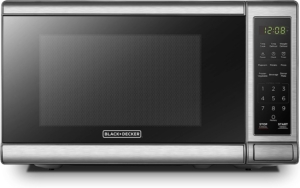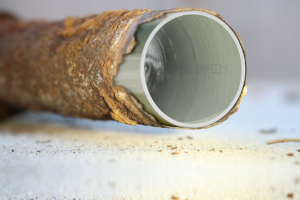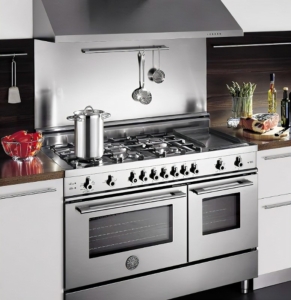Clearing the Air: The Best Air Purifiers for Smokers
Our homes are our sanctuaries, where we seek comfort and relaxation. However, the choice to smoke indoors can significantly affect our health and the air quality within our living spaces. In this blog, we will delve into the impact of smoking on indoor air quality, exploring the risks it poses and offering solutions to ensure a cleaner and healthier environment for everyone.
Understanding the Risks:
1. Secondhand Smoke:
Secondhand smoke is a combination of the smoke exhaled by a smoker and the smoke from the burning end of a cigarette. It contains over 7,000 chemicals, hundreds of which are toxic and can cause serious health issues. Non-smokers exposed to secondhand smoke may develop respiratory problems, such as asthma, bronchitis, and even lung cancer.
2. Airborne Particles and Odors:
Cigarette smoke releases tiny particles that remain suspended in the air for extended periods. These particles can adhere to surfaces, furniture, and carpets, contributing to the persistent odor associated with smoking. Over time, the accumulation of these particles can also stain walls and fabrics.
3. Volatile Organic Compounds (VOCs):
VOCs are chemicals emitted from tobacco smoke, which can have adverse effects on air quality. They can irritate the eyes, nose, and throat, and some VOCs have been linked to long-term health concerns. Additionally, VOCs can react with other substances in the air, producing harmful byproducts.
Improving Indoor Air Quality:
1. Smoke Outside:
The most effective way to protect the air quality in your home is to smoke outside. By creating a designated outdoor smoking area, you can significantly reduce the amount of secondhand smoke and airborne particles that infiltrate your living spaces.
2. Proper Ventilation:
If smoking indoors is unavoidable, ensure proper ventilation to minimize the accumulation of smoke and pollutants. Open windows and use exhaust fans to direct smoke outside. Consider installing a range hood with a high-efficiency particulate air (HEPA) filter in the kitchen to capture smoke particles.
When it comes to ensuring proper ventilation in your home, there are various methods you can employ. Each method has its own advantages and is suitable for different situations. Here are some common types of ventilation methods for homes:
1. Natural Ventilation:
Natural ventilation utilizes the flow of outdoor air to ventilate indoor spaces. It relies on openings such as windows, doors, and vents to allow fresh air to enter and stale air to exit. Natural ventilation is most effective when there is a difference in temperature or wind pressure between the indoor and outdoor environments. It can be enhanced by strategic placement of windows to take advantage of prevailing winds and creating cross-ventilation.
2. Mechanical Ventilation:
Mechanical ventilation involves using mechanical systems to extract stale air and bring in fresh air. This method is suitable for homes that lack sufficient natural ventilation or have specific areas that require targeted ventilation. There are several types of mechanical ventilation systems:
a. Exhaust Ventilation: This method uses exhaust fans to remove stale air from specific areas, such as bathrooms, kitchens, and utility rooms. The fans expel air to the outdoors, creating negative pressure that draws in fresh air from other parts of the house.
b. Supply Ventilation: Supply ventilation systems introduce fresh air into the home through fans or ducts. The fresh air replaces stale air, improving indoor air quality. Supply ventilation can be combined with exhaust ventilation for balanced airflow.
c. Balanced Ventilation: Balanced ventilation systems consist of both exhaust and supply components, providing a controlled exchange of air. They maintain a balanced airflow by simultaneously expelling stale air and bringing in fresh air.
d. Heat Recovery Ventilation (HRV) and Energy Recovery Ventilation (ERV): HRV and ERV systems recover heat or energy from the outgoing stale air and transfer it to the incoming fresh air. This process helps maintain a comfortable indoor temperature while ensuring ventilation.
3. Hybrid Ventilation:
Hybrid ventilation combines natural and mechanical ventilation methods to optimize airflow. It integrates the use of mechanical systems with automated controls and sensors to maximize the benefits of both natural and mechanical ventilation. For example, hybrid systems may use natural ventilation when outdoor conditions are favorable and switch to mechanical ventilation when necessary.
4. Window Ventilation:
Opening windows is a simple yet effective method to introduce fresh air into your home. It allows for cross-ventilation and can be particularly useful during mild weather conditions. Opening windows strategically in different areas of the house promotes airflow and helps remove stale air.
5. Whole-House Ventilation Systems:
Whole-house ventilation systems are comprehensive solutions designed to provide consistent ventilation throughout the entire home. These systems are typically integrated into the heating, ventilation, and air conditioning (HVAC) system and use ductwork to distribute fresh air and remove stale air. Whole-house ventilation systems can be set to operate continuously or controlled by timers or sensors.
It’s important to consider your specific needs, the climate in your area, and the layout of your home when selecting a ventilation method. Consulting with a professional HVAC technician or building specialist can help determine the most suitable ventilation system for your home, ensuring optimal indoor air quality and comfort.
3. Air Purifiers:
Investing in a high-quality air purifier specifically designed to remove smoke particles and odors can greatly improve indoor air quality. Look for purifiers with HEPA filters and activated carbon filters, as these are effective in capturing smoke particles and neutralizing odors. Place the purifier in the room where smoking occurs most frequently for optimal results.
There are several different types of air purifiers available on the market, each utilizing various technologies to remove pollutants from the air. Here are some common types of air purifiers:
1. High-Efficiency Particulate Air (HEPA) Filters:
HEPA filters are widely recognized as one of the most effective types of air purifiers. They are capable of capturing over 99.97% of airborne particles larger than 0.3 microns, including dust, pollen, pet dander, and some bacteria. HEPA filters work by forcing air through a fine mesh that traps the particles.
2. Activated Carbon Filters:
Activated carbon filters are effective in removing odors, gases, and chemical pollutants from the air. These filters contain activated carbon, which has a large surface area that can absorb and trap odorous or harmful substances. Activated carbon filters are often used in conjunction with other filter technologies, such as HEPA filters, to provide comprehensive air purification.
3. Ionic Air Purifiers:
Ionic air purifiers, also known as ionizers or ion generators, use ions to charge particles in the air. These charged particles then adhere to surfaces or collect on electrostatic plates within the purifier. Ionic air purifiers can effectively remove particles such as dust, smoke, and pollen. However, they do not capture particles as effectively as HEPA filters and may produce small amounts of ozone as a byproduct.
4. UV-C Air Purifiers:
UV-C air purifiers utilize ultraviolet (UV) light to kill or neutralize microorganisms, such as bacteria, viruses, and mold spores. The UV-C light damages the DNA or RNA of these organisms, rendering them inactive or unable to reproduce. UV-C air purifiers are often combined with other filtration methods, such as HEPA or activated carbon filters, to provide comprehensive purification.
5. Ozone Generators:
Ozone generators produce ozone, a gas that can react with and neutralize certain pollutants in the air. Ozone generators are typically used for commercial purposes or in unoccupied spaces. It’s important to note that ozone can be harmful to humans and should be used with caution. Residential air purifiers typically do not use ozone generators.
6. Electrostatic Precipitators:
Electrostatic precipitators use an electrostatic charge to remove particles from the air. As air passes through the purifier, particles are given an electrical charge and then attracted to oppositely charged plates or filters within the device. Electrostatic precipitators can capture larger particles effectively, but they may not be as efficient in removing smaller particles compared to HEPA filters.
4. Cleaning and Maintenance:
Regular cleaning is essential to eliminate smoke residues and odors from surfaces. Vacuum carpets and upholstery regularly using a vacuum cleaner with a HEPA filter. Wipe down hard surfaces with appropriate cleaning agents, paying close attention to walls, windows, and furniture. Consider professional deep cleaning services to remove stubborn smoke odors.
5. Non-Smoking Policy:
Implementing a non-smoking policy in your home is a proactive approach to maintain excellent air quality. Encourage smokers to respect the rules and smoke outside. This not only protects the health of non-smokers but also helps preserve the cleanliness of your living environment. As much as we respect personal choices, it’s no secret that smoking has adverse effects on our health and the environment. The lingering odor, harmful chemicals, and secondhand smoke can be a major concern for both smokers and non-smokers alike. However, there is a solution to combat these issues – air purifiers designed specifically for smokers.
Here are our Best Air Purifiers for Smokers:
Considered by many as the gold standard in air purification, the IQAir HealthPro Plus is a top-notch option for smokers. Its advanced HyperHEPA filtration system effectively captures ultra-fine particles, including tobacco smoke, odors, and volatile organic compounds (VOCs). The HealthPro Plus features a powerful fan and a four-stage filtration process, ensuring clean and healthy air in your home. With its ability to cover large areas and its exceptional performance, this purifier comes highly recommended.
The Blueair Classic 605 is a top-rated air purifier known for its excellent performance in removing smoke and odors. Equipped with an advanced HEPASilent filtration system, it combines mechanical and electrostatic filtration to remove 99.97% of airborne particles. This includes smoke, dust, pet dander, and other pollutants, providing a healthy and fresh environment. The Classic 605 also features Wi-Fi connectivity, allowing you to control and monitor the device remotely through your smartphone.
Compact yet powerful, the Coway Mighty AP-1512HH is an affordable option for smokers seeking cleaner air. Despite its smaller size, it doesn’t compromise on performance. This purifier utilizes a four-stage filtration system that includes a pre-filter, activated carbon filter, True HEPA filter, and Vital Ionizer. Together, they effectively capture smoke particles, harmful gases, and odors. With its user-friendly controls, energy-efficient operation, and sleek design, the Coway Mighty is a popular choice among smokers.
4. Winix HR900 Ultimate Pet Air Purifier:
While primarily marketed for pet owners, the Winix HR900 Ultimate Pet Air Purifier is equally effective in combatting smoke-related issues. It boasts a comprehensive filtration system that combines a pre-filter, True HEPA filter, and activated carbon filter. This powerful combination captures smoke, pet dander, and other allergens with ease. The HR900 also features PlasmaWave technology, which neutralizes odors and harmful pollutants at a molecular level, ensuring clean and fresh air for smokers and non-smokers alike.
The Rabbit Air MinusA2 is a versatile air purifier suitable for various environments, including spaces with smokers. Its advanced six-stage filtration system removes a wide range of contaminants, including smoke, allergens, bacteria, and viruses. The MinusA2 also features a customizable filter, allowing you to choose from options like Germ Defense, Pet Allergy, or Toxin Absorber, depending on your specific needs. With its whisper-quiet operation and stylish design, it seamlessly blends into any living space.
Top 10 frequently asked questions (FAQs) about air purifiers for smokers:
1. What is an air purifier?
Answer: An air purifier is a device designed to remove contaminants from the air, including smoke particles, allergens, dust, and odors, to improve indoor air quality.
2. Can air purifiers effectively remove cigarette smoke?
Answer: Yes, certain air purifiers are specifically designed to capture and eliminate cigarette smoke particles and odors, helping to improve the air quality in spaces where smoking occurs.
3. How do air purifiers for smokers work?
Answer: Air purifiers for smokers typically use a combination of filters and technologies such as activated carbon filters, HEPA filters, and sometimes specialized smoke filters to trap and remove smoke particles, chemicals, and odors from the air.
4. Are all air purifiers suitable for smokers?
Answer: No, not all air purifiers are equally effective at removing smoke particles and odors. It’s important to choose an air purifier specifically designed for smoke removal, with features like activated carbon filters and strong filtration capabilities.
5. What features should I look for in an air purifier for smokers?
Answer: Look for air purifiers with multiple filtration stages, including activated carbon filters to capture smoke particles and odors. High Clean Air Delivery Rate (CADR) and a large coverage area are also important considerations.
6. How often do I need to replace the filters in an air purifier for smokers?
Answer: The frequency of filter replacement depends on the specific model and usage. Generally, pre-filters should be replaced every 3-6 months, activated carbon filters every 6-12 months, and HEPA filters every 12-18 months. Refer to the manufacturer’s instructions for guidance.
7. Can air purifiers completely eliminate smoke smell?
Answer: While air purifiers can significantly reduce smoke particles and odors, complete elimination of smoke smell may require additional measures such as proper ventilation and cleaning of surfaces. However, air purifiers can greatly improve indoor air quality in smoke-prone environments.
8. Can air purifiers help with secondhand smoke?
Answer: Yes, air purifiers can help remove secondhand smoke particles and odors from indoor environments, which is especially beneficial for individuals who are sensitive to smoke or have respiratory conditions.
9. What is the recommended room size for an air purifier for smokers?
Answer: Consider the square footage or room size that the air purifier is designed to cover. Choose a model with a coverage area that matches or exceeds the size of the room where it will be used for optimal effectiveness.
10. Are air purifiers noisy?
Answer: Noise levels can vary among air purifiers. Some models have noise-reduction features and operate quietly on lower fan speeds, while others may produce more noticeable noise on higher fan speeds. Check product specifications and customer reviews for noise information.
Remember to refer to the specific product information and reviews when selecting an air purifier for smokers, as different models may have unique features and specifications.
Conclusion:
Smoking indoors significantly impacts the air quality within your home, posing health risks to both smokers and non-smokers. By understanding the dangers associated with smoking and taking proactive steps to improve air quality, such as smoking outdoors, ensuring proper ventilation, using air purifiers, and maintaining a clean environment, you can create a healthier and more enjoyable living space for yourself and your loved ones. Remember, the air we breathe plays a vital role in our overall well-being, and it’s worth prioritizing clean air for a better quality of life.











